Border-Crossing Missionaries
This year people in Tonga are celebrating 150 years since the arrival of the first women religious or Sisters.
Challenges to missionary endeavour
Tongan historian, Sione Latukefu writes: “Seldom has there been such rapid and effective indoctrination of a people than that achieved by Wesleyan Methodist missionaries in Tonga from the 1820s.” Given the hostile attitudes among Christian churches at the time, it was no wonder that the first Catholic missionaries struggled to gain a foothold in Tonga. The French Marists were repulsed by the Protestants when they first set foot on the island of Vava’u in 1837. Five years later, however, they managed to establish a small presence in Pea on the mainland. Tensions were spirited -- Catholic / Protestant; English / French.
Consequently, it was almost thirty years before the Marists considered it time to invite women religious to Tonga. In 1870 Bishop Elloy accompanied six Religious of Our Lady of the Missions (RNDM) from France, destined for Tonga and Samoa.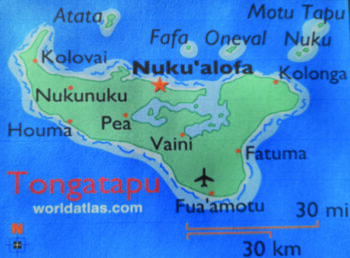
Women missionaries enter the scene
Three zealous women disembarked from the Wild Wave in 1871, eager to extend the kingdom of Jesus Christ by working with women and children. They were Mother Marie St Augustin (prioress), Marie des Cinq Plaies and Mary of Jesus. This third Sister had been chosen because of the increasing English-speaking population in Nuku’alofa at the time. Of Irish descent, Sister Mary of Jesus Healy had been born in England 31 years previously. The family immigrated to New Zealand, settling in Christchurch. There she expressed her desire to go to the ‘foreign missions.’
Father (later Bishop) Lamaze and the Ma’ufanga parishioners welcomed these ‘sacred virgins’ warmly, providing a Tongan house for them near the seashore until a more permanent convent was erected.
Soon the sisters opened a school for girls aged 10 to 14. Eight boarders and ten day pupils started at the Convent of the Immaculate Conception. Gradually, numbers increased. When the foundress, Euphrasie Barbier, visited the Pacific in 1875, she was most encouraging.
After already labouring 17 years in Wallis and Futuna, the ‘elderly’ Sister Marie de la Pitié -- fifty-five years old! -- was sent to Tonga. Writing to a friend in Lyon, she commented how the people were respectful of the ‘Virgins,’ “looking upon us as their mothers, wanting the Sisters to pay attention to their spiritual and temporal needs, to help them when they are sick, visit them, talk with them and even share in their feasts.”
Unsettling years
The 1870s were turbulent years for the Sisters. A change of personnel in the mid-1870s resulted in the kindly majestic-looking Mother Marie St Augustin leaving for France with the foundress. Then Marie des Cinq Plaies and Mary of Jesus transferred to a new congregation begun in Samoa. When finally the decision was made for all RNDM to go either to New Zealand, back to France or leave the congregation, Marie de la Pitié, who had poor health, chose to remain in the Ma’ufanga convent with two girls. The future was unknown, but she trusted in God and in Mary.
Hope restored!
New Year, 1881. A ship anchors in Tonga bringing four Sisters with Bishop Lamaze -- one Futunian and three French Sisters. These were members of the newly established Third Order Regular of Mary (TORM) which Bishop Lamaze began for the vicariates of Central Oceania and Navigators. Imagine the delight of Marie de la Pitié! She came out to the Pacific missions as a member of the Third Order of Mary in 1857, and now, here was the Third Order as a religious community with vows. She happily made her profession as a TORM that same year.
Schools reopened. Sister Marie Delphine, who knew English from her time in Australia, taught the children in the ‘English’ school, and Sister Malia Vika took the local children. While fully responsible for the schools, Sister Marie Xavier, who had a nursing background, attended to those who came to the dispensary. Years later, during the 1918 flu epidemic, she seems to have provided much of the only medical care available.
After four years, Bishop Lamaze reported: “Sisters are in several places in Tonga: Ma’ufanga, Mu’a, Vava’u and Hihifo. Tongan sisters are a blessing in working with the women and children, and in helping Sisters from overseas to adapt. Everywhere school is taught; churches are looked after; in a few stations the sick are cared for.”
Tongan vocations
Soon a number of Tongans were asking to become Sisters. In 1886 the first were professed -- Taise (Sister Malia ‘Amato) and her cousin Fusipongi (Sister Malia Mateo). Taise was a granddaughter of the chief who first received Father Chevron in Pea in the 1840s. She had been Marie de la Pitié’s companion for some years. For those who entered, there was little structured formation, but the candidates were women of faith and love who wanted to be like the sisters and contribute to building up the kingdom of God. A formation house (novitiate) began formally in 1932 after the various TORM groups around the world united to become the Missionary Sisters of the Society of Mary (SMSM).
From the 1890s to the 1950s, Tongan and European sisters worked side by side. The church in Tonga became more firmly rooted. Schools were flourishing; multiple works began in response to needs. Other women’s congregations came to work in the island Kingdom.
Missionaries crossing borders
In the mid-20th
century, a growing sense of identity was developing in Tongan SMSM. They, too, share in the congregation’s missionary vocation to be sent to other peoples to witness to Jesus Christ. Since then, in the deserts of Africa and the jungles of Latin America, the islands of Jamaica and the Pacific, Tongan sisters have been missioned as pastoral workers, teachers and social workers, nurses and administrators, often later bringing the rich experience back to their home Church.
While we acknowledge the great work of clergy in Tonga, it is good to remember and honour the contribution that women religious and the laity have always played in evangelisation.
The people and Catholic Church in the Kingdom of Tonga are truly proud of what these women have accomplished. Inheritors of this past, may others continue to respond to God’s invitation to be missionaries crossing borders.
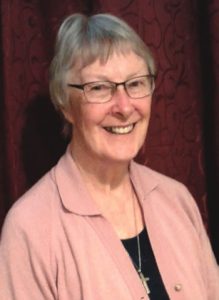
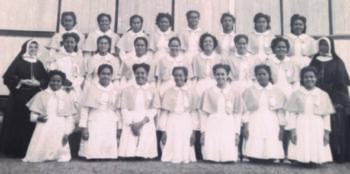
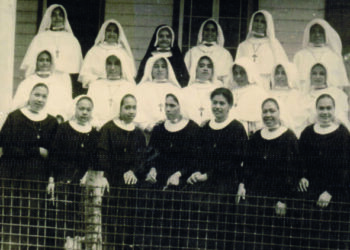
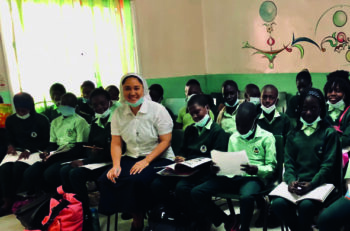
 Entries(RSS)
Entries(RSS)